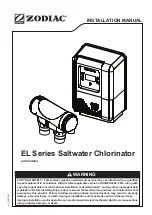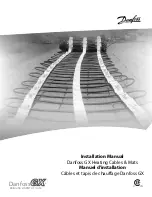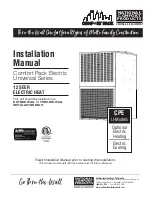
26
Use and Care of the System
See Figures 16, 17, 18 & 19 for the location
of the specific components numbered below.
1) Solar Collector(s) (Rheem RS Series):
Absorbs the sun’s heat energy and
transfers this heat to the HTF circulating
through the collector. (Provided)
2) Collector Sensor (Stecca PT1000):
Wired to the system controller.
Works in conjunction with the tank
sensor to automatically turn your
circulating pump on and off at preset
temperature differentials. (Provided)
3) Tank Sensor (Stecca PT1000): Wired to the
system controller. Works in conjunction
with the collector sensor to automatically
turn your circulating pump on and off at
preset temperature differentials. (Provided)
4) Differential Thermostat (Stecca
Controller RHTR0301U): Known as
the controller. Automatically turns the
circulating pump on and off when there
is sufficient heat to be gained from the
solar operation. The controller also may
be set to limit high temperature build up
in the solar storage tank. (Provided)
5) Circulating Pump (Grundfos UPS15-
58FC or equivalent): Circulates the HTF
through the collector loop. (Provided)
6) Isolation / Drain Valve (Unique 50613 or
equivalent): When closed in conjunction
with No. 7 will isolate the circulation
pump for repair or replacement. Used
to charge the collector loop with glycol,
purge air from the loop and drain the
heat exchange fluid. (Provided)
7) Isolation / Drain Valve (Unique 50613 or
equivalent): When closed in conjunction
with No. 6 it will isolate the circulation
pump for repair or replacement. Used
to charge the collector loop with glycol,
purge air from the loop and drain the
heat exchange fluid. (Provided)
8) Isolation Ball Valve (Cash Acme
20800-204 or equivalent): Used in
conjunction with component No. 7 to
isolate the solar collector loop from
the solar storage tank. (Provided)
9) Pressure Relief Valve (Cash Acme 09564-
0125 or equivalent): Will release glycol
loop HTF at 75 PSI. If this valve opens
and the HTF fluid is expelled contact your
contractor immediately. This valve also can
be opened to drain the HTF from the charge
glycol loop for replacement. (Provided)
System Component Parts
pump is running and the control indictor
light "Solar" #1 is on after 6:00 p.m., check
both sensors to see that they calibrate to
10K ohm resistance at 77°F. If you find a
defective sensor replace it immediately.
Note that in a two tank system nighttime
heat loss will be harder to detect, especially
if you are operating in the solar preheat
mode. Check the line thermometers (No.
22) in the collector loop piping to detect
night thermosiphoning.
• If the weather is poor and your gas solar
storage tank is not heating water, the pilot
may have to be lit. Refer to the storage
tank manual for lighting instructions and
diagnostic procedures.
Never remove the Burner Access Door
unless absolutely necessary. This should
only be done by a qualified service
technician. A new burner access door
gasket must be installed on any burner
access door that has been removed.
If the pilot will not stay lit or you still
do not have hot water after one hour, the
thermocouple or thermostatic gas valve
may be defective. Contact your installation
contractor for service.
Maintenance and Troubleshooting continued







































